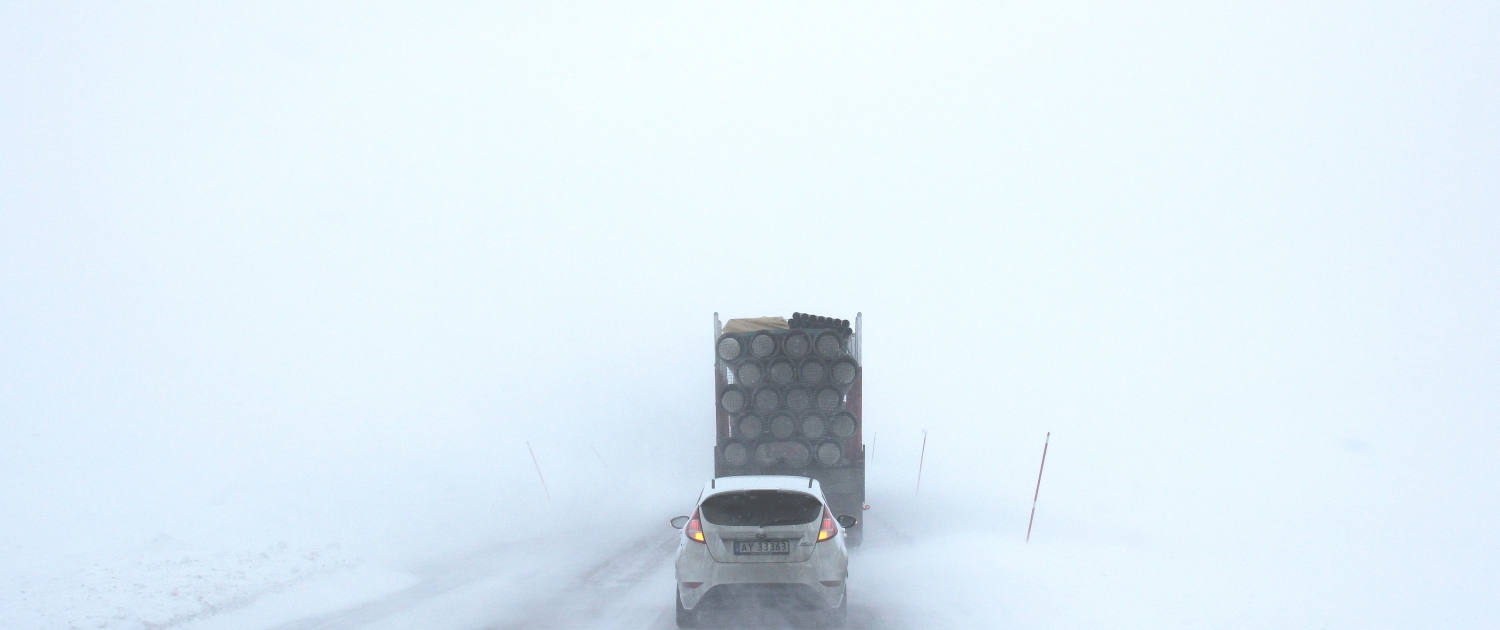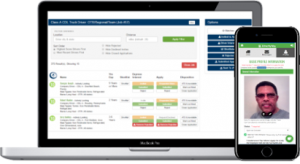
The weather can quickly take a nasty turn when least expected. Snow, ice, and sleet are still a possibility this season. Winter weather can significantly raise the risk of driver accidents on the road.
Taking the precautions to prepare for winter weather will help you stay safe on the road and make reach destinations on time. Keep these ten winter driving tips in mind before hitting the road during difficult weather conditions.
1. Vehicle Inspection
Be extra careful during your inspection in the winter months. Check important internal factors like tire pressure, engine oil, and antifreeze levels. Complete a visual, hands-on inspection of all tires, wiper blades, and lights. Maintain at least a half a tank of gas during the winter in case you need to run the engine while stopped on the side of the road. Make sure heat and defroster are functioning normally to keep yourself and the truck warm
2. Slow Down
This may be a no-brainer, but worth repeating. While driving in snow or ice, take the effort to drive slower than you usually do. The speed limits posted are for ideal conditions and should be kept lower for winter weather. Basically, you want to compensate for the poor traction on snow-filled roads.
Hydroplaning occurs when water builds between the wheels and the road surface, leading to loss of traction. Hydroplaning prevents the vehicle from responding to controls as quickly. Slowing down gives you more time to react if anything suddenly changes.
3. Allow More Space
Ideally, stopping distance should be twice as much on a wet road as on a dry one. Leave plenty of room between your truck and the vehicle in front of you so that you have enough space to move out of the way in case of unpredictable situations. Avoid driving in packs. Usually, you may want to herd with other trucks on the road, but in winter weather this can be a disadvantage. Find a way to get away from the rest of traffic so that you’re driving alone.
4. Avoid Sudden Changes
Speaking of sudden changes, try to avoid them! If you need to change speed or direction, try to do so gently. You mainly want to remain smooth and avoid anything that reduces traction. Instead of sudden braking, try pumping your brakes if you need to slow down quickly. Similarly, avoid sudden acceleration or cornering. If your truck comes equipped with anti-lock braking system, now is the time to use it. This will avoid the change of locking the tires and spinning out of control.
5. Pay Attention to Tire Spray
Tire spray is a good measure of how wet the road is. Observe the water coming off the tires of vehicles around you. The more wet the road is, the more careful you have to be about slowing, maintaining distance, and keeping traction.
If there is less tire spray, the roads may have started to ice over. Watch for black ice- that’s a layer of transparent ice that makes the road look wet.
6. Route Preparation
Keeping up to date with the weather conditions will go a long way towards being prepared for what’s coming your way. Use GPS apps or information provided by dispatch to know which roads may be closed. Telematics can help you know where other drivers are, the routes they are taking, and opportunities to find safer routes. Maps will also help you locate rest stops for nearby shelter if needed.
7. Always Turn on Headlights
Another obvious one, but you may be surprised how often we all forget to implement this. Headlights are always a must during snow or rain, but also during low visibility conditions like fog or mist. Having the lights on will allow others to know where you are. Be sure to clear off snow and ice from the headlights whenever you have stopped.
8. Pull Over if Needed
If driving conditions are extremely severe, pull over to be on the safe side. Don’t worry about the schedule and coordinate the situation with dispatch.
Get off the road and find a safe place to wait for conditions to improve. While rest stops are ideal, don’t be opposed to stopping elsewhere if the nearest rest stop is too far away.
9. Winter Driving Kit
Having with the right equipment before any route during the winter will help you stay prepared for emergencies. Here’s the minimum of what should go in your winter driving kit: extra layers of clothing, gloves, flashlight, blanket, batteries, non-perishable food and water, bags of sand, salt and windshield washer fluid, windshield scraper and brush, jumper cables, first-aid kit, tire chains and traction mats.
10. Take Extra Care on Bridges
Bridges and highway overpasses usually freeze first since they are more elevated. To make matters worse, bridges may not be treated with ice/snow melt materials as quickly as main roads and highways. Take particular caution to drive on these and avoid them if possible. Look for alternate routes, even if they add some additional time.
Want to find a job you love?
Drive My Way matches drivers with jobs based on their qualifications and lifestyle preferences.





